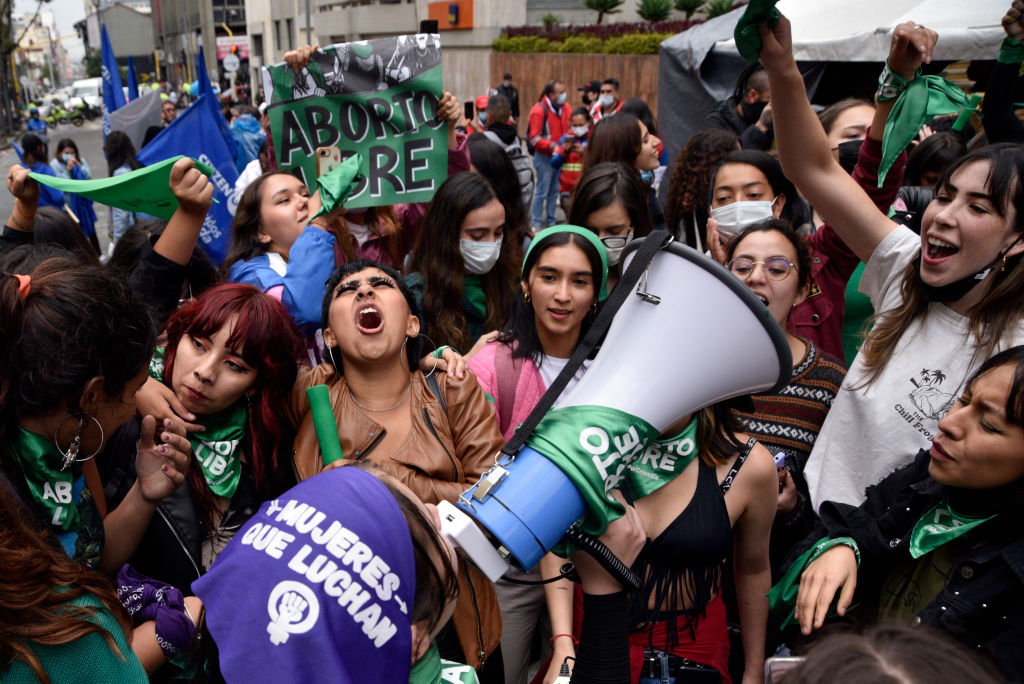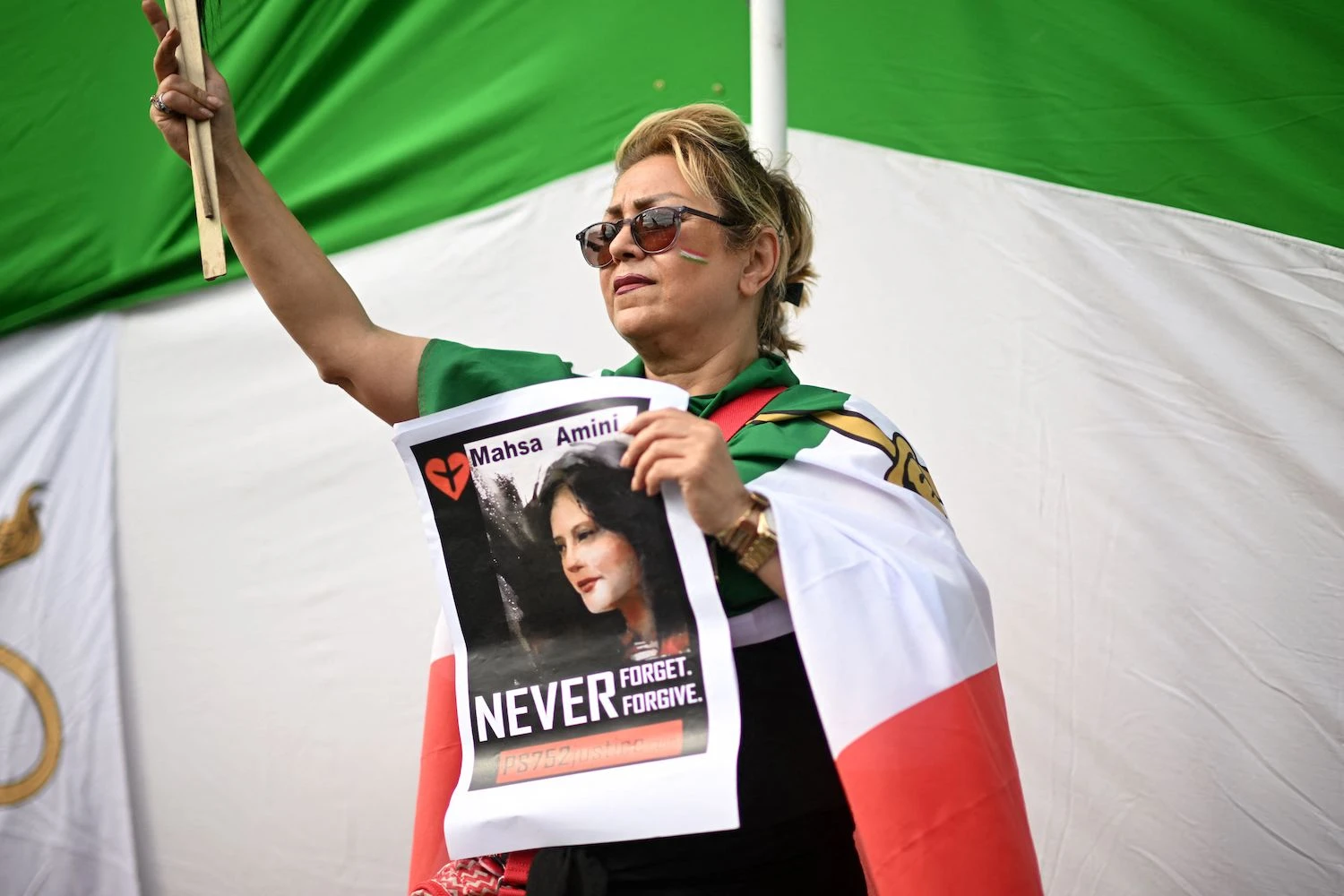When headlines scream of war, economic collapse, and rising authoritarianism, stories about women and how they drive change are often silenced. Yet women are on the front lines of every crisis and conflict. In 2022, they have pushed against entrenched interests to chip away at social norms and rules that often keep them from reaching their full potential. They have won office, changed laws, enlisted allies, and made real progress in the struggle for equality.
Since 2018, The Fuller Project has partnered with Foreign Policy to examine critical issues pertaining to women’s rights around the world. This reporting features in our shared “The Full Story” column and beyond. Here is a collection of the most profound ways women have made an impact this year, as chronicled by The Fuller Project and FP.
As we look to 2023, there is reason for hope.
1. Iran’s protest movement
Since the Sept. 16 death of 22-year-old Mahsa Amini in the custody of Iran’s so-called morality police—which enforced strict religious rules, including an Islamic dress code—Iranian women and their allies have poured into the streets of Tehran as well as localities large and small to protest their government’s decadeslong oppression of women. Protesters are risking arrest and death: At least 481 demonstrators have so far been killed by Iranian authorities, according to reports from the Human Rights Activists News Agency in Iran.
Iranian women’s bid to reclaim their rights has earned widespread international support and prompted solidarity protests in cities from Seoul to Toronto. Many Iran fans at the FIFA World Cup in Qatar even held signs emblazoned with the movement’s slogan: “Women, Life, Freedom.” Iran’s players faced swift reprisals from their government when, in support of the protesters, they refused to sing the national anthem at their opening match against England.
This month, Iran’s attorney general, Mohammad Javad Montazeri, announced that the government had abolished the morality police in an apparent concession to protesters. The announcement did little to quell the unrest. As Sina Toossi argued in Foreign Policy, “it would be a mistake to assume the government’s move represents anything other than an incremental shift.”
2. Climate change advocacy
Women are disproportionately affected by climate change. The United Nations Environment Programme estimates that women account for 80 percent of those displaced by climate change. Yet because women often work in the informal economy, the toll that environmental catastrophe takes on their livelihoods may be undocumented or unrecognized. The Fuller Project’s Disha Shetty reported from Pune, India, in July and found that an unbearably hot summer in South Asia led to a precipitous drop in productivity and income for women who work in or near their homes.
It should come as no surprise, then, that women are at the forefront of the global climate movement. From the Fridays for Future movement led by Swedish activist Greta Thunberg—which counts 14 million members in 7,500 cities—to the Green Generation Initiative led by Kenyan activist Elizabeth Wathuti—which has planted more than 30,000 trees in that country—to the Rise Up Movement led by Ugandan activist Vanessa Nakate—which works to save the Democratic Republic of the Congo’s rainforest—women have demanded and received a seat at the negotiating table. Participating countries at the U.N. climate change conference in November, known as COP27, agreed to create a “loss and damage” fund to support developing countries that are particularly vulnerable to climate change. An idea previously considered fringe, these activists helped bring loss and damage into the mainstream.
3. Latin America’s green wave

This year, a grassroots movement of women demanding reproductive autonomy continued its march across Latin America. The so-called green wave began in Rosario, Argentina, in 2003 with a gathering of 10,000 women in green bandanas who demanded the decriminalization of abortion and right to contraception in their country. It soon spread across the nation and culminated in a massive protest outside Argentina’s National Congress in 2019. In 2020, Argentina legalized abortion until 14 weeks of pregnancy.
Argentina’s green wave sparked protests in Mexico, Ecuador, Chile, Peru, and Colombia. In Mexico, the Supreme Court ruled in 2021 that criminal prosecution for abortion is unconstitutional. This year, Colombia decriminalized abortion up to 24 weeks, Ecuador legalized abortion in rape cases, and Mexico’s Quintana Roo became the last state in the country to decriminalize abortion following the 2021 court ruling.
All these steps toward reproductive rights in Latin America have appeared starker when compared to the trajectory of the United States. The U.S. Supreme Court in June overturned the landmark precedent Roe v. Wade case, which had guaranteed a woman’s right to an abortion. Ten U.S. states have already enacted total bans on the procedure. Foreign Policy mapped how the U.S. downward spiral on abortion rights goes against the global current of liberalization, and The Fuller Project’s Erica Hensley chronicled how American women are fighting back.
FP’s Catherine Osborn argued that the green wave has been more successful than U.S. abortion rights activism because it is fundamentally focused on the intersection between issues. “Claims that legalizing abortion would not only promote privacy and individual choice (Roe’s linchpin) but also improve access to health care and decrease social inequalities have been key in victorious lawsuits in Latin America,” she wrote.
4. Ukraine’s women farmers
Even as Russian soldiers occupied her apricot orchard—and even as the bombs fell close enough that she could see the smoke plumes from her wheat fields—Nadiia Ivanova kept farming.
“I have 45 fields, large and small, and I found a Russian missile in each one of them,” Ivanova told Amie Ferris-Rotman, who was reporting for The Fuller Project near Mykolaiv in southern Ukraine, a Ukrainian-controlled territory near the Black Sea.
She is one of some 10,000 women who run farming enterprises in Ukraine and are fighting to keep up production. Ukraine is often referred to as the breadbasket of Europe and is a large supplier of wheat to Africa, the Middle East, and Asia. Russia’s invasion of Ukraine has exacerbated a global food shortage and a hunger crisis in the Middle East and Africa that disproportionately impacts women and girls. It grew so severe that the U.N. intervened over the summer to broker a deal with Turkey to ship grain safely out of Ukraine via the Black Sea.
Ukraine’s women farmers have persisted, however—housing and feeding Ukrainian soldiers as well as fighting to ensure their crops get to market. The women see food as their opportunity to do their part in the war effort.
“These are our weapons,” said farmworker Valentyna Fedorenko, holding up a bucket of fresh green cucumbers. “By feeding the people, we are equipping them to fight.
5. Afghan women resisting the Taliban
In the year since the Taliban regained control of Afghanistan, two decades of gains in women’s employment and education have all but disappeared. Fuller Project reporters have collaborated with Rukhshana Media, a woman-led Afghan newsroom, to document the new realities for women in Taliban-controlled Afghanistan; in “The Full Story,” we have highlighted the plight of queer Afghans. The picture is grim.
The Taliban have ordered women to remain in their homes, barred women from most jobs, and reimposed mandatory face coverings for women in public. Women also may not travel without a male guardian. The new restrictions have limited women’s access to health care, education, and work. The U.N. said the lost income from barring women from the workforce could cost Afghanistan as much as 5 percent of its GDP, plunging the country into deeper poverty and exacerbating food insecurity.
Despite these setbacks, some Afghan women are rising up in rare protests—at great personal risk, reported FP’s Lynne O’Donnell. “Many activists want the world, and especially the United States, where successive administrations greased the path to the Taliban’s return to power, to do more to hold the regime to account,” she wrote.
These are stories of women fighting for rights, for themselves, and for others. Thousands more remain to be told.



